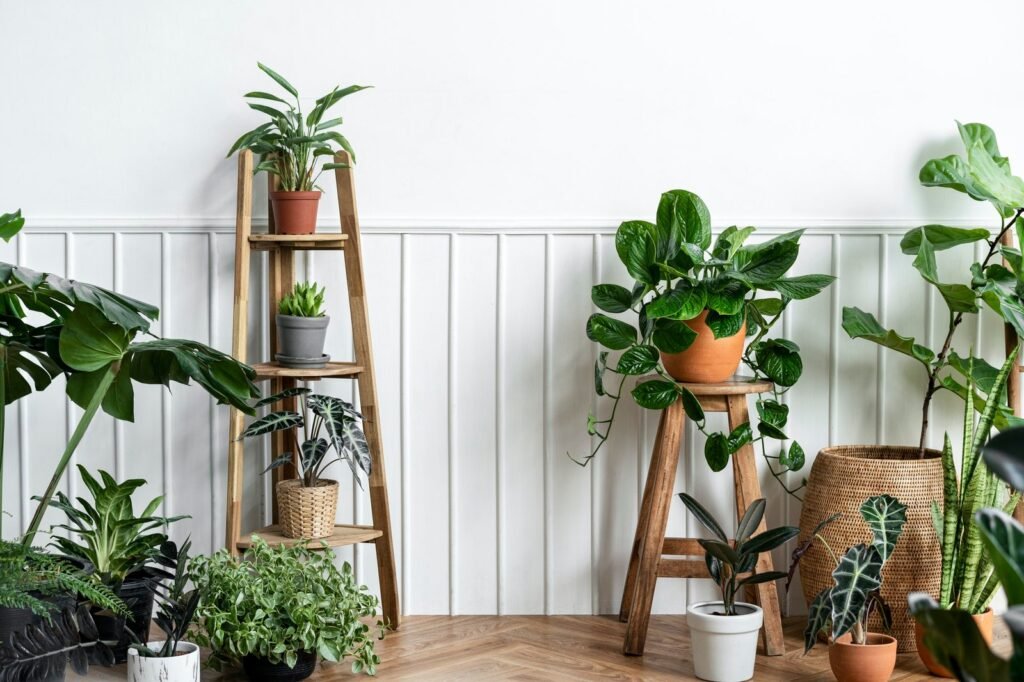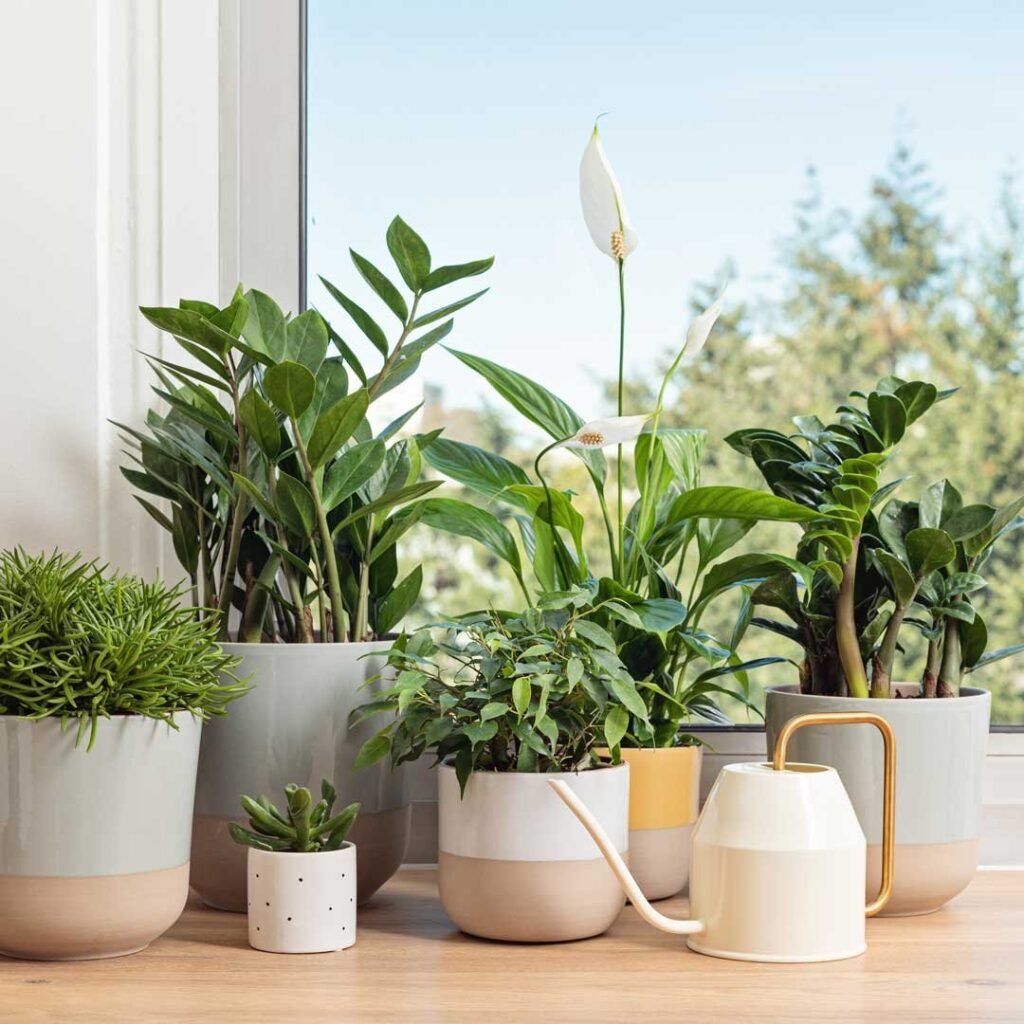Choosing the right planter isn’t just about aesthetics; it’s crucial for the growth and health of your plants. Here are some key points to help you choose the perfect planter.
1.Common Planter Materials and Their Pros and Cons
- Terracotta Planters: Affordable and ideal for plants that need good drainage, like succulents. However, they are prone to cracking.
- Concrete Planters: Highly durable but heavy, making them ideal for outdoor use.
- Resin Planters: Lightweight and durable, suitable for various environments.
- Metal Planters: Durable but prone to rusting; suitable for plants that need more sunlight and heat.
- Plastic Planters: Inexpensive, easy to move, and replace; ideal for indoor use.
- Ceramic Planters: Non-porous and good for retaining moisture, ideal for tropical plants, but they are fragile.

2.How to Choose Indoor and Outdoor Planters
- Outdoor Planters: Need to be made of durable, waterproof materials like concrete and metal; should have a good drainage system.
- Indoor Planters: Choose lightweight materials like plastic and ceramic; drainage is less critical than for outdoor planters.
3.The Impact of Planter Shape and Height
- Square and Rectangular Planters: Fit well in corners or along pathways and provide more planting area.
- Round Planters: Great for showcasing single plants but have less surface area.
- Tall Planters: Promote better air and water exchange and are ideal for plants with deep roots.
- Short Planters: Best for plants with shallow roots, like succulents.
4.How to Avoid Overcrowding Plants
Plant appropriately according to the size of your planter:
- 10 to 12-inch planters: Suitable for 3-4 plants.
- 14 to 16-inch planters: Suitable for 5-7 plants.
- 16 to 20-inch planters: Suitable for 6-9 plants.

5.Choosing the Right-Sized Planter
Select the planter size based on the size and root depth of your plants:
- Plants in planters smaller than 10 inches: Choose a planter 1-2 inches larger.
- Plants in planters larger than 10 inches: Choose a planter 2-3 inches larger.
6.How to Plant in a Planter
- Select the Right Plants: Consider light and moisture requirements.
- Prepare the Planter: Use high-quality potting soil and add fertilizer or organic matter.
- Plant Your Plants: Arrange them based on size and gently loosen the roots.
- Water and Maintain: Keep the soil evenly moist and regularly check for maintenance.
7.Planter Drainage and Watering Tips
Ensure your planter has good drainage to avoid root rot. For planters without drainage holes, add rocks at the bottom to aid drainage.
8.How to Keep Your Planter Plants Healthy
- Choose the Right Soil: Use soil that meets your plants’ needs.
- Control Watering: Avoid overwatering and underwatering to maintain the right moisture balance.
- Fertilize Regularly: Keep nutrients supplied to promote plant growth.
By following these simple steps, you can choose the right planter and ensure your plants thrive.
Hale’s Planter Recommendations
Hale offers a variety of decorative planters, from modern to traditional styles. Our terracotta and ceramic planters are perfect for all kinds of plants, and we welcome small batch customization to meet your different needs.
Welcome to contact us
Email: unachan@haleplanter.com
WhatsApp: +86-13828330324

